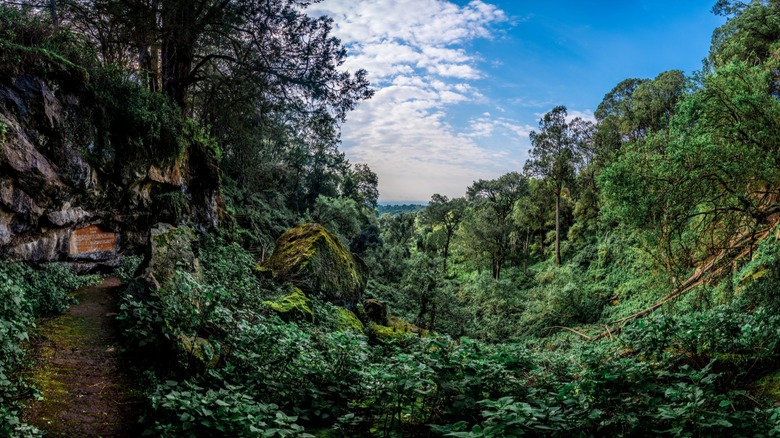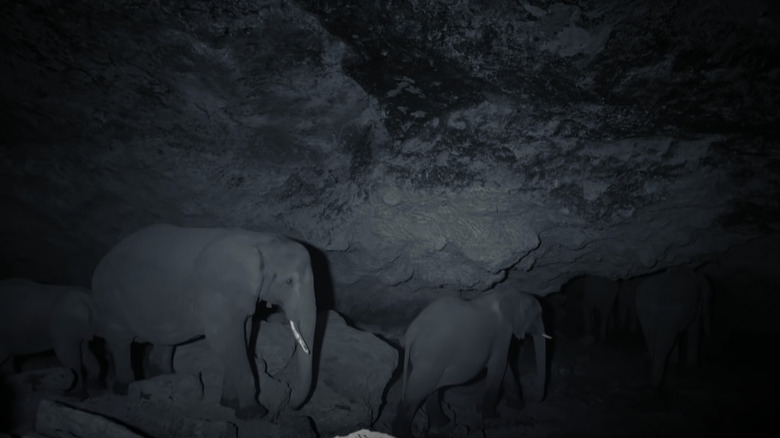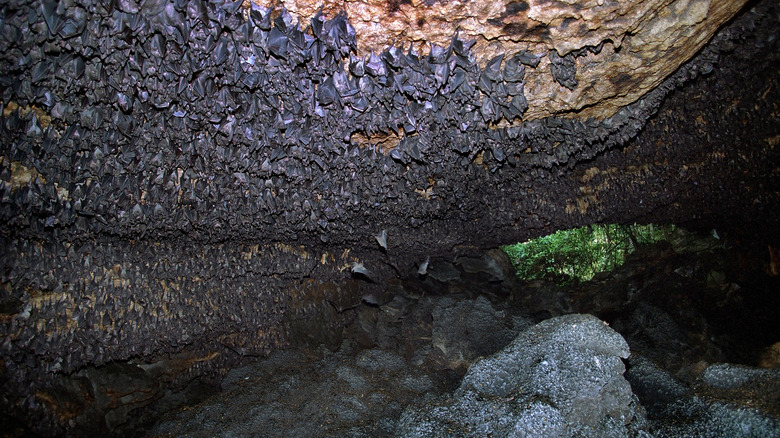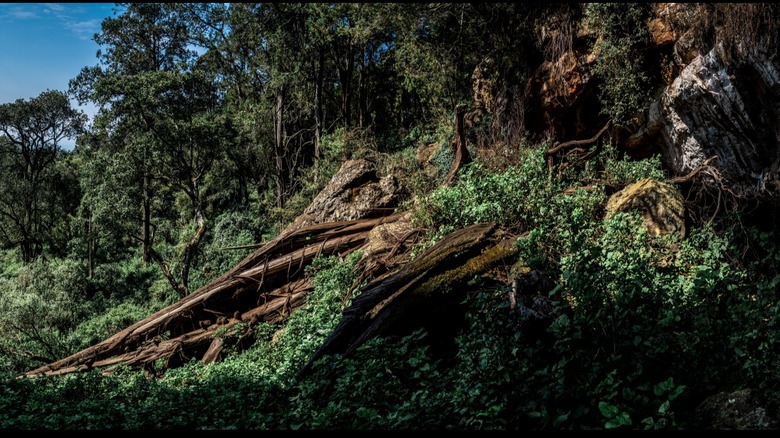Why This Popular State Park In Africa Is Also Considered The Deadliest Place On Earth
The inside of Kitum Cave echoes with high chirps and screams. They are coming from the softly undulating ceiling, where hundreds of bats cover every inch of stone. The walls are not smooth, either. As unbelievable as it might seem, Kitum Cave was once a rainforest. Millions of years ago, a volcanic eruption turned the trees to solid rock, but their trunks are still visible, sticking out of the cave walls. If you look closely, you may see another texture: grooves. This cave was carved out of the stone intentionally, but not by human hands.
Elephants come to Kitum Cave at night seeking salt. The cave is now large enough to accommodate an entire herd of savannah elephants, all scraping their tucks along the cave walls and carving out chunks of salty minerals. They aren't the only ones. In fact, every night for thousands of years, animals of all kinds, including hyenas, hippos, buffaloes, and ancient extinct creatures that once roamed Kenya, have flocked to Kitum Cave to lick the walls.
Bones, some recent and some ancient, can be found on the cave floor. As described in Richard Preston's nonfiction thriller "The Hot Zone," these animals died of natural causes, but at one time, something more deadly was found in this cave: disease.
Deaths after visiting Kitum Cave
In 1980, a 56-year-old French engineer named Charles Monet working in Kenya explored Kitum Cave. Seven days later, he began suffering headaches, fatigue, fever, and vomiting. He was taken to a hospital in Nairobi for specialist care. Soon after, he was dead. One of his doctors attempted to resuscitate him without success. Nine days later, the doctor was suffering from the same symptoms. Ultimately, the doctor survived the illness that had killed his patient, but it was not the last outbreak.
Seven years later, a teenager suffering the same symptoms also died in the hospital, despite almost two weeks of intensive treatment from his care team. He too had visited Kitum Cave three days before his symptoms began.
The disease was Marburg Virus Disease (MVD), a close relative of the more famous Ebola virus. Unlike Ebola, however, outbreaks of MVD often seem to begin underground in mines or in caves like Kitum Cave.
Where Marburg Virus Disease came from
As described by the European Centre for Disease Prevention and Control, Marburg Virus Disease can't be spread through the air by coughing or sneezing like many highly infectious diseases. However, Marburg marburgvirus (MARV), which causes MVD, still has the potential to cause deadly epidemics. It spreads through contact with an infected person's bodily fluids like saliva or blood — so how did two people manage to catch it in Kitum Cave several years apart?
There is still no definitive answer about why MVD seems to come from the cave, but the answer may be the bats that make Kitum Cave their home. Near the entrance of Kitum Cave, the walls are covered in greenish guano (bat droppings) from the fruit bats that roost there. Deeper inside the cave, there is a large quantity of black bat guano, from insect-eating bats. In 2007, a study published by Emerging Infectious Diseases collected samples from bats across Kenya, including some captured in Kitum Cave. One of the Kitum Cave bats tested positive for MARV. It is believed that contact with the waste from infected bats, possibly even inhaling microscopic amounts of it, may have caused the deaths in Kitum Cave.
Can you visit Kitum Cave today?
Kitum Cave is located in Mount Eglon National Park, which is home to a variety of incredible animals that visitors can see in their natural habitats, including the savannah elephants whose ancestors carved Kitum Cave. Despite the fact that it may be the origin of a deadly disease, Kitum Cave is the most popular attraction at Mount Eglon National Park.
Regardless of its disturbing link to Marburg Virus Disease, Kitum Cave is a fascinating place with a history that dates back thousands of years to a time before humans evolved on planet Earth. It is an excellent place to see a herd of elephants in their native environment, doing something they have done for centuries.
If you plan to visit Kitum Cave despite the risks, you shouldn't go alone. Like any cave, there is a risk of falling, getting lost, or exposure to diseases of all kinds from the bats roosting inside. It's advised that you bring a local guide with you while traveling anywhere in Mount Eglon National Park.



